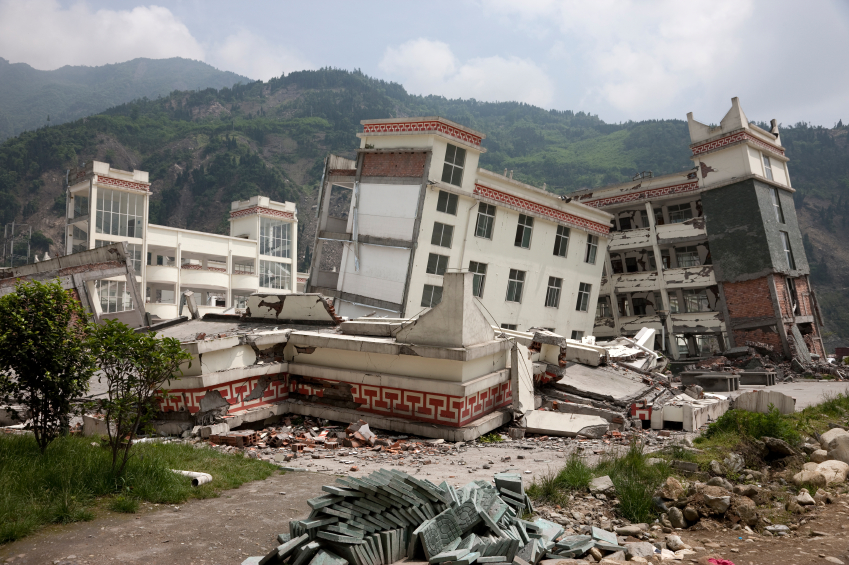The Danger Zone: Natural Disasters And Homeowners Insurance

No one likes to dwell on the possibility of something bad happening to their home. Unfortunately, bad things happen to homes every day. Whether it be wildfires, flooding, tornadoes, earthquakes, or hail storms, Mother Nature has the ability to wreak havoc—and she sure does. For some, natural disasters are more likely to happen than for others. But for all, it’s important to know what the weather is capable of and how we can protect ourselves from it.
Are you in the danger zone?
According to a RealtyTrac study, 55% of American homes are sitting in high to very high risk zones. For those living in Alabama, Georgia, and Mississippi, you have the highest rate of natural disasters. And in the counties of Jefferson and Tuscaloosa, you are seven times more likely to be affected by a tornado than anywhere else in the U.S.. One of the recent tornados caused $2.4 billion in damage.
Safest places to live—weather-wise
If you’re afraid of the power of nature, Minnesota or Montana have the lowest risk of weather-related property damage. This isn’t to say storms can’t roll through and cause some problems, but in these states, about half of all homes are in medium to low risk areas.
Natural Disaster Facts
Depending on where you live, you could be affected by one or a few of these natural disasters. Here are some stats about the most common types of property damage causing natural disasters.
- Tornadoes
- On a scale of EF-1 to EF-5 (5 being the worst), EF-2 and EF-3 tornadoes can destroy a home in four seconds—that’s with wind speeds of over 100 miles an hour.
- Texas has the record for tornadoes—recording about 120 every year.
- Tornadoes average 660 feet—that’s two football fields—and travel on the ground at 30 miles per hour with wind speeds anywhere from 70 to 300 mph.
- 77 percent of tornadoes have wind speeds less than 110 mph.
- In the U.S., about 1,000 tornadoes touch down every year and costs $1.1 billion in damage.
- The average length of a tornado is five minutes.
- Hurricanes
-
- Hurricanes can trigger floods, flash floods, storm surges, tornadoes, and landslides.
- Winds sustained at 75 mph and over on land are considered to be a hurricane, everything under is a tropical storm.
- Category 5 hurricanes can reach sustained winds of 155 mph.
- About three to six hurricanes hit the U.S. every year.
- Hurricane Katrina was America’s costliest—at $108 billion.
- Hail
-
- Hail damage cost State Farm customers $2.4 billion in 2014.
- Texas filed the most hail damage claims in 2014, followed by Illinois, Colorado, Missouri, Nebraska, and South Carolina.
- Hail that is 3/4″ is big enough to harm your roof.
- Floods
-
- In the U.S., floods are the most common natural disaster.
- Floods caused more than $2.8 billion in damage in 2014.
- The average flood claim has averaged $42,000 for the past four years.
- Florida, Pennsylvania, Alabama, New York, and Texas had the most flood claims in 2014.
- Wildfires
-
- More than 73,000 wildfires burn approximately 7.3 million acres of land and over 2,600 structures every year.
- Oregon, California, Arizona, Idaho, Alaska, and Washington had the most acreage loss in 2014 due to wildfires.
- Wildfire claims cost in the hundreds of thousands annually.
- Earthquakes
- The U.S. records about 20,000 earthquakes annually.
- 42 states are at risk for earthquakes.
- Landslides, avalanches, flash floods, fires and tsunamis are all possible products of an earthquake.
- Alaska has the most earthquakes in the U.S. followed by California, Hawai’i and Nevada.
- Earthquake premiums in California average $1.75 per $1,000 of coverage. Lower risk areas pay only $0.50 per $1,000
How will weather affect home insurance rates?
Alabama’s average homeowner’s policy cost more than $1,100 a year versus a little more than $500 a year for Idaho, where it’s cheapest. For earthquake insurance, Californians will pay about $800 per year, but way more—at about $2,000-$5,000 for a 1,400-square-foot home if they live in San Francisco.
Since insurance companies base premiums on risk, you can expect to pay much more in premiums if you live in a high risk area for flood, earthquake, or other natural disasters that aren’t covered by typical homeowners insurance. You can either gamble and go without (only 10% of Californians have earthquake insurance these days) or pay for a higher premium to protect yourself in case the worst happens.
[SUREHITS]
What You Can Do About It
If you’re living in one of these areas and have begun to panic, don’t. What happens with the weather is out of our control. However, you can always make sure you have an insurance policy that will cover you in case the worst happens. Talk to your insurance provider today about the risks in your area and what you can do to add more coverage.
If you’re searching for a home, then you’re in a much better place for avoiding natural disasters. Look for homes that sit above the water table or have structural elements to prevent flooding. If you’re living on the east coast, see how common hurricanes are in your house hunting area. For tornado-prone zones, look for newer construction that has utilized better building practices to fortify your home. You get the gist. Whenever you’re looking for a home, safety is the number one priority and asking a lot of questions will ensure you’re protected better from the elements.
Find the right insurance for your car and home.
[SUREHITS]
Free Insurance Comparison
Enter your zip code below to view companies that have cheap insurance rates.
Secured with SHA-256 Encryption
